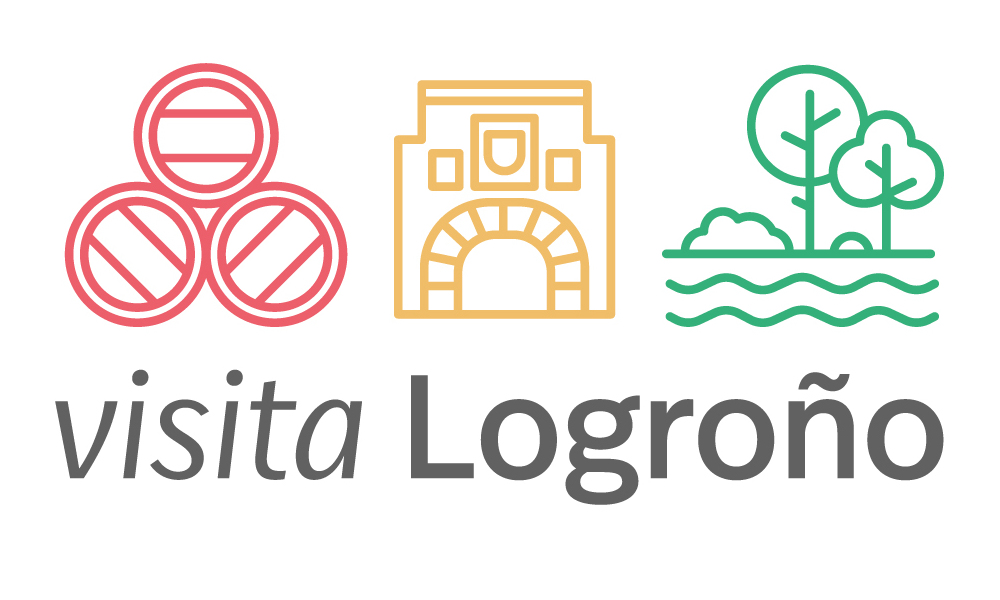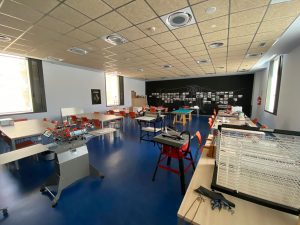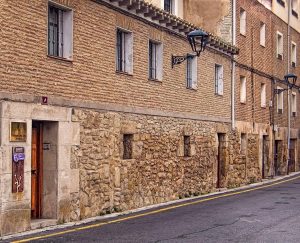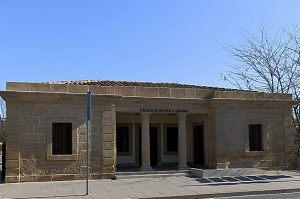
When the pilgrimages to Santiago began in the 10th century, the cities located on its route took a leap towards modernity. Logroño benefited from the development and progress that always accompanies the exchange of knowledge and experiences.
The enrichment was social, cultural, scientific, economic and even affected trends and fashion. The constant passage of pilgrims through the city reactivated commercial life. It was necessary to attend and satisfy the needs of all those people who were on the way to Compostela. Thus, establishments arose in which to rest, eat, replenish food for the trip, make repairs or heal wounds and injuries.
The Camino de Santiago — Way of Saint James pilgrim route today gives prominence to tourism and hospitality, although the spirit of exchange of influences and experiences remains intact, as well as the places, streets and squares in which the story began ten centuries ago, which generated the presumed presence of the apostle in Santiago.
The hospitable city
The pilgrim approaches Logroño after descending Mount Cantabria. Today it is an extraordinary viewpoint over the city. Its origin is in ‘illo- gro-nio’, ‘that ford’ (Latin pronoun and Celtic expression). At the top of this mountain there are pre-Roman archaeological remains (circular hearths and hand-made ceramics, 2nd century BC). A historical legacy that goes back to the town of the Berones tribe.
The neighborhood of San Antonio welcomes the walker and directs him towards the Stone Bridge with a fixed gaze already on the towers that stand out on the north facade of the Old Town.
Before crossing the Ebro, the walker will wonder about the beautiful red building that overlooks the river: it is the Casa de las Ciencias, a municipal space to learn and enjoy.
Before even starting their journey across the bridge, the faithful arouse the pilgrim’s curiosity. These old tax houses –built in the 19th century to collect tribute from whoever wanted to enter the city– became the Pilgrim Information Office.
Symbols of Logroño
The Stone Bridge is one of the symbols of the city and it has been reflected in its coat of arms since 1285.
The Stone Bridge is one of the four existing in the city. It was built between 1882 and 1884, according to the project of the engineer Fermín Manso de Zúñiga. The Piedra bridge was built on the structure of the previously existing one known as San Juan de Ortega, which, deteriorated, was knocked down by a flood in 1871.
The cobblestones of Ruavieja street go back to the days of steps with leather sandals and wooden soles, a coat with a cape, and a tall staff. The restored buildings still keep the structure of what were former shops and places of worship, such as the small Hermitage of San Gregorio, where the saint sent to La Rioja by Pope Benedict IX lived and died.
Just a few meters away, the Church of Santa María de Palacio and the Municipal Pilgrim’s Hostel invite the traveler to rest, to rest and regain strength that will allow them to resume their march. The hostel occupies the palatial-style building located at number 32 Ruavieja street.
The Calado de San Gregorio –30 meters long underground cellar–, the Espacio Lagares, which brings together an interesting collection of wine infrastructures, the drafts of The Golden Gate and the Rioja Culture Center, they remind us, before leaving Ruavieja street behind, that wine and the Camino de Santiago have been the historical engines of the development, growth and modernization of Logroño.
Did you know…?
They say that the Game of the Goose was invented by the Templars and that they locked up their knowledge in it. There are even those who claim that Kabbalistic keys and possibly some treasure are hidden on the board.
When returning to the march, and after crossing Sagasta Street following the signs sculpted in bronze tiles, the Church of Santiago emerges imposingly from the spur of the slope that begins with Barriocepo Street. A moment before starting the ramp, the Plaza de la Oca surprises, a space in which, around the scale recreation of the traditional board game, Jacobean itineraries with esoteric elements attributed to the Templars are interspersed.
There are also those who warn of the similarity between the Camino de Santiago and the Game of the Goose and that in reality the game is an unwritten guide to the Jacobean Route, related to the Order of the Temple.
The Fountain of the Pilgrim appears in front of the Plaza de la Oca and a moment before looking towards the church of Santiago. Built in stone, the fountain is located on a lower level than the plaza and has a lowered arch structure between two pillars and two pipes.
The Church of Santiago bursts in spectacularly as you ascend the slight cobbled slope. You feel the sensation of approaching a special place. The foundations of the temple date from 844, when a disciple of the saint built the first church in his honor. A fire destroyed that original temple around 1500.
The construction of the current church lasted throughout the 16th century. A large statue of Santiago welcomes the visitor from the façade and another, from the main altarpiece. The forty meter high tower offers unbeatable views over the city.
Along Barriocepo street there are still establishments dedicated to crafts and restoration. They are within walking distance of Parliament Square.
The La Rioja Parliament building imposingly dominates the square. Former convent of La Merced (16th century), over time it has been a barracks, hospital, prison and convent again. Coinciding with the Presidency of the Government of Práxedes Mateo Sagasta (1886), the building was transformed into a tobacco factory –of which the factory chimney is preserved–, which was a huge economic boost for the city.
The flowers of the shield
Carlos V granted Logroño three fleurs-de-lis on the shield in recognition of the city’s resistance and victory against the siege and siege suffered in June 1521 by French troops.
Today, the old convent of La Merced is divided into three different spaces. Thus, the La Rioja Library and the Amós Salvador Exhibition Hall are added to the regional chamber.
A short distance away, in the heart of the Old Town, are the Casa-Palacio de los Fernández de Ástiz, current headquarters of the UNED; the Palace of the Marquis of Legarda, the Museum of La Rioja, the San Blas Market or the dynamic Calle Portales, essential axis of the life of the city.
Farewell in the park
The Camino de Santiago leaves the Historic Quarter behind through the Puerta del Revellín. Also known as Puerta del Camino, according to old historical documents, it is a work after the wall. It is believed to have been completed between 1522 and 1534, probably being built at the same time as the bridges that cross the moat.
Above the door you can see the double-headed eagle of Carlos V, along with two city coats of arms in which the lily flowers granted by the monarch to Logroño already appear.
After crossing the Puerta del Revellín, the pilgrim can stamp the seal at the Logroño – La Rioja Tourist Office , located in the old Trevijano Schools, and from there stroll following the signs to La Grajera Park .
La Grajera is an extraordinary natural setting that surrounds the reservoir built in 1883 on a small lagoon to improve the irrigation of the orchards in the area.
Today it is a recreational space rich in plant and animal species, which has a didactic classroom and a bird observatory. There are 427 hectares of pure nature to accompany the pilgrim and bid him farewell with the best memories on his way to Compostela.



